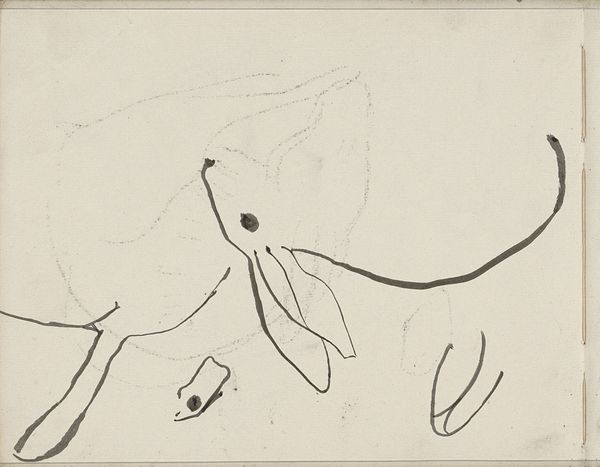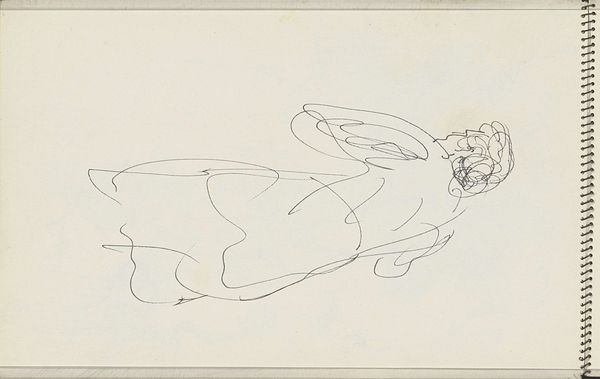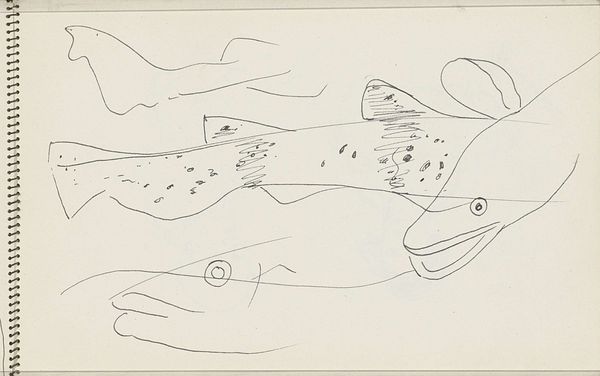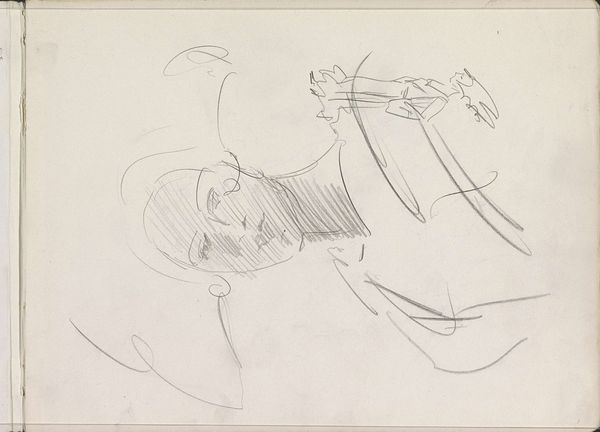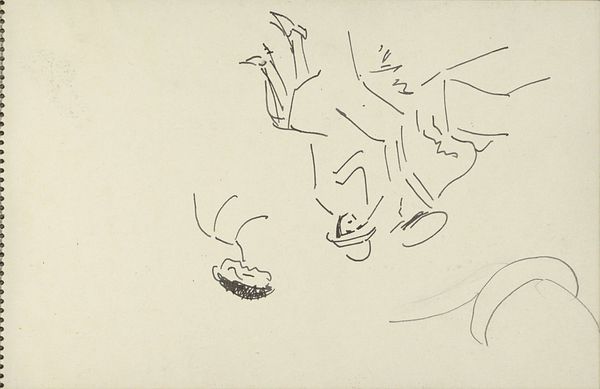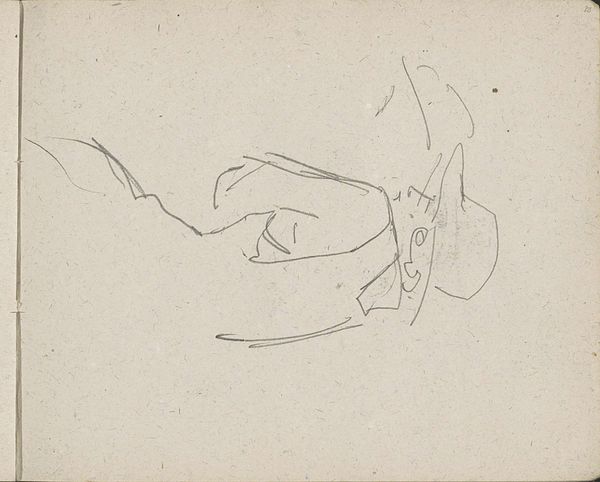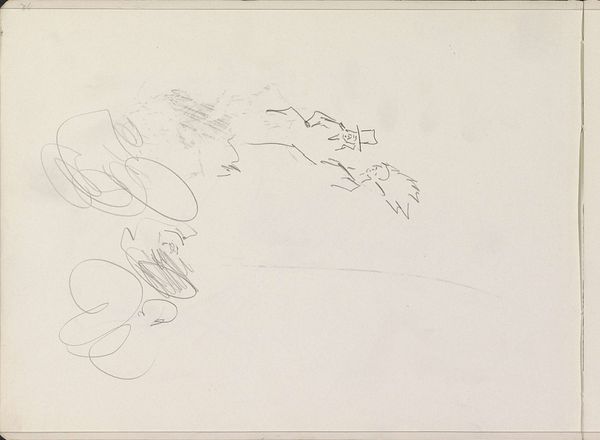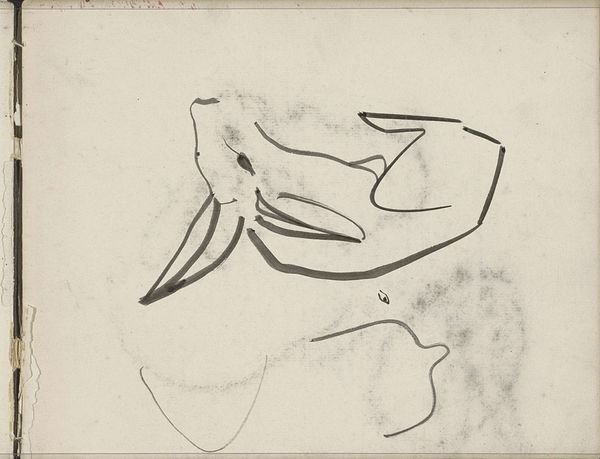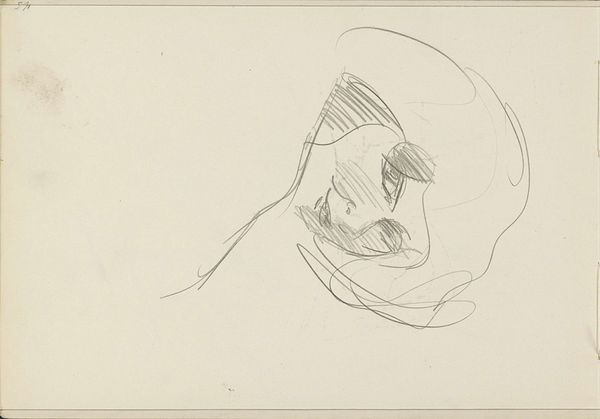
Copyright: Rijks Museum: Open Domain
Editor: So, this is "Vissen," by Carel Adolph Lion Cachet, from around 1930. It's an ink drawing on paper. It feels almost like a page torn from a sketchbook, very spontaneous. The lines are so simple, yet they hint at fish forms. What strikes you about this piece? Curator: Immediately, I am drawn to the economy of line. Note how the artist, with a minimal number of strokes, defines form and volume. It is an exercise in pure representation, almost a deconstruction of the fish motif to its barest essence. Consider the relationship between the positive and negative space; the white of the paper is just as crucial as the ink. Editor: That’s interesting. I hadn't really thought about the empty space as being important, but I see what you mean. Do you think the artist was more interested in the *idea* of a fish than in accurately portraying one? Curator: Precisely. It transcends mere representational accuracy. The slight abstraction, the suggestion of form, invites a dialogue between the viewer and the artwork. Ask yourself, how do these simplified shapes engage your imagination? Are they more impactful because they are not overly detailed? Editor: Yes, it makes me focus on the flow and movement rather than getting bogged down in detail. It's almost calligraphic, in a way. Curator: Indeed! And look closely at the variance in the linework - there's a subtle contrast that defines shape. I invite you to contemplate on these contrasts in the form, and on the interaction between subject and style. Editor: That makes sense. I see so much more in the drawing now, seeing it that way! Thank you! Curator: My pleasure. It is always rewarding to observe a shift in perception when engaging with art.
Comments
No comments
Be the first to comment and join the conversation on the ultimate creative platform.

